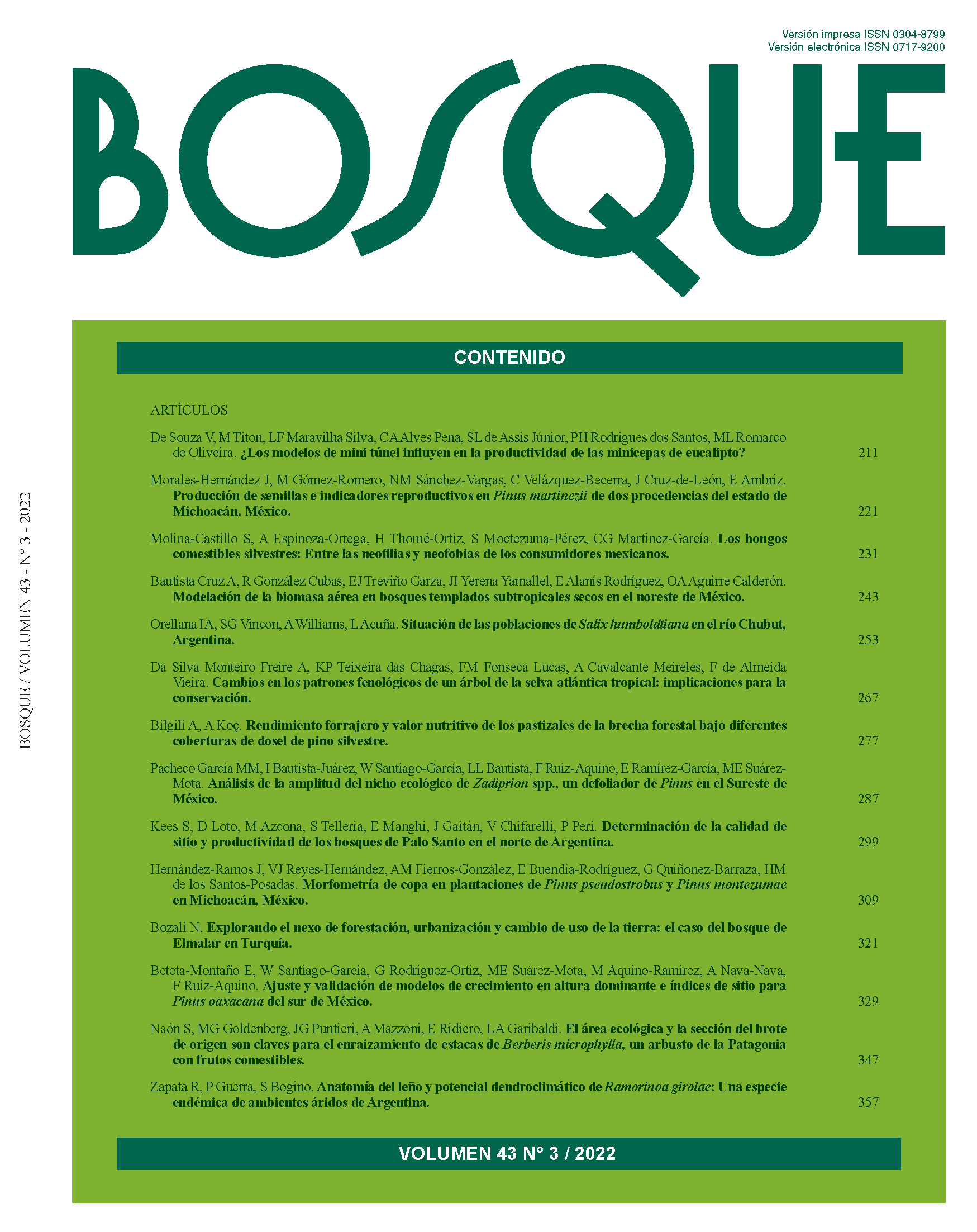Main Article Content
Jan 4, 2023
Abstract
Most pine species produce high amounts of viable seeds, and this characteristic varies according to number of trees and soil conditions. The assessment of reproductive indicators under such conditions has been documented. However, in species such as Pinus martinezii, whose populations are small, scattered and fragmented, information on such reproductive characteristics is limited. The objective of this work was to evaluate cone size, reproductive indicators and inbreeding index of P. martinezii from sites with different degrees of soil degradation. Thirty cones were collected from eight trees at two sites in the state of Michoacán. The data were analyzed using a two-way ANOVA, whose factors were provenance, family and the interaction between them. In addition, a correlation was made between reproductive parameters and cone size. The values obtained per cone were: 80.6 to 129.6 potential seeds, 15.7 to 79 % developed seeds, 8.6 to 50.6 % full seeds, 39 to 91.1 % vain seeds, 20.9 to 99 % abortive ovules and 0.39 to 0.91 inbreeding index. A significant difference was observed between provenances and families in most of the evaluated variables. Reproductive indicators show a substantial loss of seeds due to abortive ovules and vain seeds, which indicates reproductive problems due to the low number of individuals. This situation is exacerbated by soil degradation.


